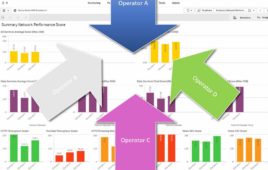AT&T Monday voiced its concerns with T-Mobile and Verizon Wireless’ “down from channel 51” band plan for the 600 MHz incentive auction.
Overall, AT&T said it agrees with the plan’s four main principles, which include maximizing paired spectrum in the 600 MHz incentive auction; allowing for cost-effective and timely development of new equipment and devices; facilitating a single 3GPP band class where appropriate; and allocating supplemental downlink blocks below Channel 37. 
But in an ex parte filing, AT&T stated that its support for the plan hinged on a few important caveats.
Specifically, AT&T referenced its previously proposed band plan that detailed a 25 x 2 MHz approach, which it said could allow carriers to repurpose antennas currently used in the lower 700 MHz, among other things. T-Mobile and Verizon suggest a 35×35 MHz Frequency Division Duplexing pairing that will only require a single band class. AT&T conceded that the technical hurdles of Verizon and T-Mobile’s plan could be overcome, but added that the joint proposal depends heavily on how much spectrum can actually be made available through the auction.
“Maximizing the amount of paired spectrum by relying on the 35 x 2 MHz approach outweighs the countervailing engineering concerns where 84 MHz of spectrum or more is widely available,” AT&T wrote in its filing.
AT&T argued that for the 35 x 2 plan to work, the auction would need to yield at least 84 MHz of spectrum or more in the largest non-border markets across the country.
AT&T noted that if only 72 MHz of spectrum is cleared in the majority of non-border markets, the approach supported in T-Mobile and Verizon’s plan would yield only 20 x 2 MHz or four pairs. AT&T said that it could not support any of the specific 35 x 2 MHz configurations in T-Mobile and Verizon’s plan for clearing targets at 78 MHz or below in non-border markets.




